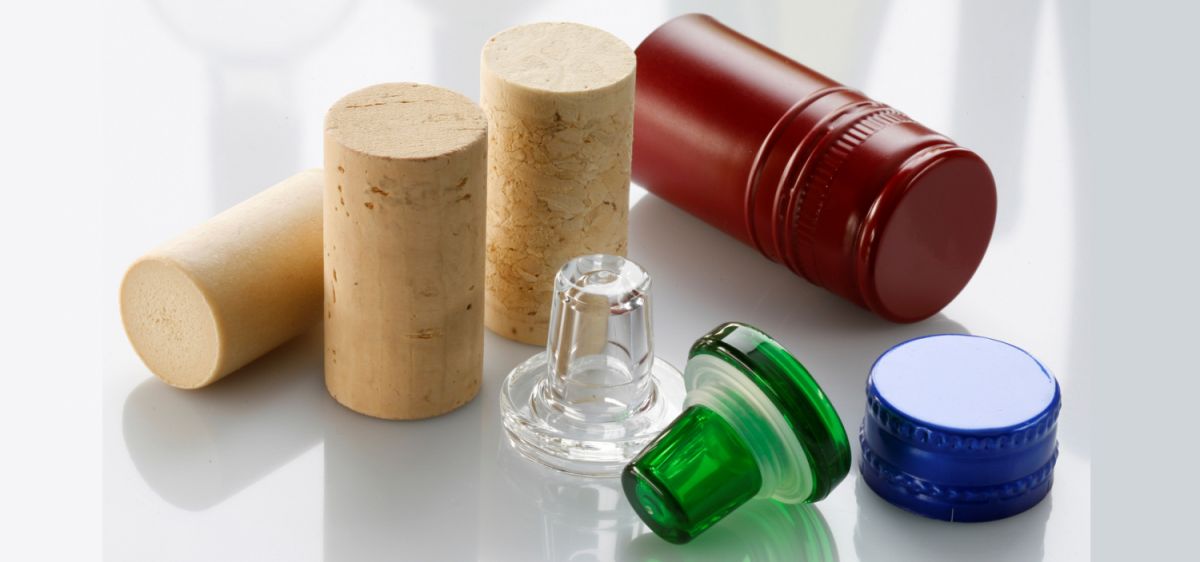There are often emotional and controversial discussions about the ideal closure for wine bottles. The point of contention is which system is the "right" one for which wine. This is directly related to the second question of whether and to what extent oxygen is required for the development of the wine during bottle ageing or for its shelf life. The air in the empty space in the neck of the bottle may be sufficient, but this is usually filled with inert gas or vacuumised during bottling before sealing. The corks (natural corks) are more permeable than alternative closures such as conventional plastic corks or screw caps by a factor of up to 3 or 4.

Oxygen transfer rate
Research at the Australian Wine Research Institute ( AWRI ) has shown that a controlled supply of oxygen at a constant OTR (Oxygen Transfer Rate) can have a positive effect on the aroma and colour of red wines in particular. However, the amount required depends on the grape variety. For the red wine varieties Cabernet Sauvignon, Carmenère, Garnacha Tinta and Syrah under different oxygen conditions, studies have shown that OTR is a key factor in the development of red berry flavour. In the meantime, there are alternative closures that allow an individualised oxygen supply (see micro-oxygenation and oxygen management).
Cork taint
The demand for alternative closures has arisen due to the increasing problems with cork taint. This dreaded wine defect can range from barely perceptible to disgusting and, at worst, makes a wine undrinkable. In some cases, the discussions about it have become a real cultural dispute. The "cork apostles" believe that the use of other closures is a "culture shock" and that the "pop" when opening a bottle of wine is something that should not be missed. They like to use the example that it is almost sacrilegious to open a Château Mouton-Rothschild from the 1945 vintage by twisting a capsule like profane mineral water.
Those in favour of screwcaps, on the other hand, believe that you can easily do without this noise if you can expect unadulterated wine enjoyment in return. What is the current situation regarding the use of different closures? Around 60% of wine bottles worldwide are still sealed with corks made from cork oak (natural corks). Around a third of these are so-called cork granulates (agglomerates or agglomerated corks), which are bound with the help of resin or glue. The trend in the use of cork stoppers is decreasing due to the cork taint problem.
Alternative closures
The most common alternative is the screw cap, which is ideal for resealing. Around 15% of bottles worldwide are sealed with this type of closure, and the trend is rising. However, there are many other alternative closures. Well-known products include CorkScrewCape, Delfin, DIAM (flexible oxygen supply), glass corks, H.I.S.S., crown corks, plastic corks, MAESTRO, Nomacorc (flexible oxygen supply), ProCork, STELVIN, Vinolok, VinPerfect (flexible oxygen supply) and Zork. Swing tops, grip corks and bottle stoppers are not suitable as permanent closures.
The trend towards other closure systems is steadily increasing at the expense of natural cork. Particularly in New Zealand (90%) and Australia (60%), the proportion of alternative closures is extremely high, with the majority being screw caps. Even in France, where there were initially major acceptance problems, this is now increasingly gaining acceptance for high-quality red wines. In Greece, Austria and Switzerland, more than half of all wines are already sealed with alternative closures, and the trend is rising. See also barrel types, bottles, corks and wine containers.
Voices of our members

Using the encyclopaedia is not only time-saving, but also extremely convenient. What's more, the information is always up to date.
Markus J. Eser
Weinakademiker und Herausgeber „Der Weinkalender“